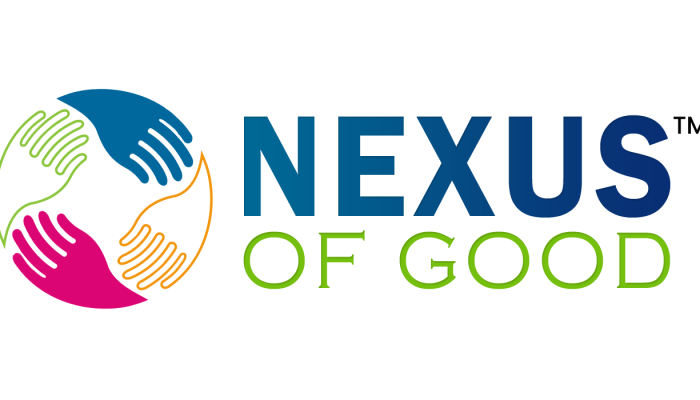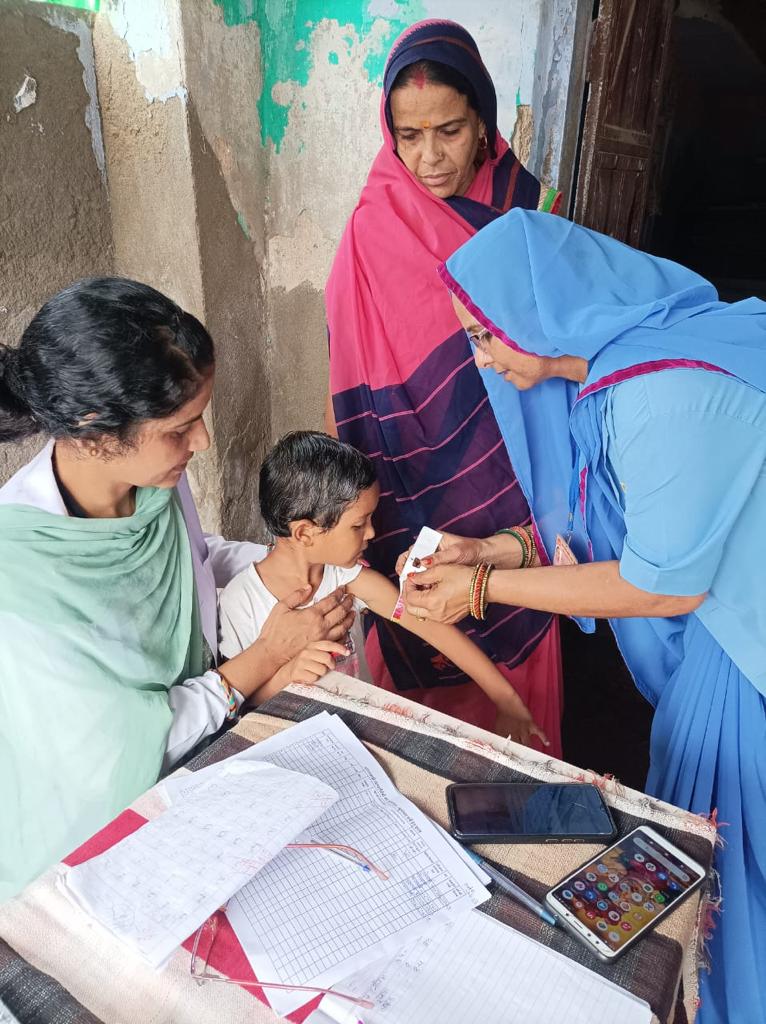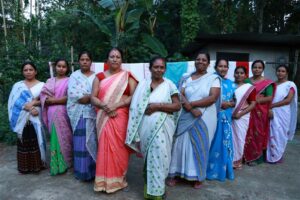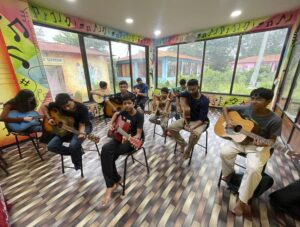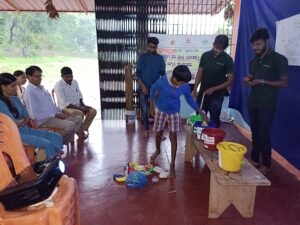NFHS -5 data shows that across India, 67% of children aged 6-59 months suffer from
Anemia. The prevalence of anaemia among pregnant women stands at an alarming 52%.
Despite numerous interventions and advancements in technology, Anemia continues to be a
major public health problem in India. It is estimated that about 20% of maternal deaths are
directly related to anaemia while another 50% are associated with it. Various public health
interventions like NNAPP ( National Nutritional Anemia Prophylaxis Programme), National
Iron Plus Initiative (NIPI) has been implemented across the country in the past few
decades. Currently, Anemia Mukt Bharat aims to bring all interventions under a single
umbrella. However, the recent NFHS 5 survey figures paint a dismal picture of the overall
scenario on the ground.
Lack of a basal survey to start with, little to no district-specific data on prevalence,
blind reliance on Iron Folic acid tablets with no deeper understanding of underlying
causes of anaemia, defective eating patterns, worm infestations, poor hygiene, lack of
family planning leading to multiple births, lack of menstrual hygiene, non compliance
to IFA supplementation in school, lack of focused monitoring and database are some
of the issues in tackling this problem that I had witnessed first-hand in my previous postings
as well as with the hindsight of my medical training.
Upon joining as District Collector Dudu, I started visiting the anganwadis in my area to see
their condition. In a single anganwadi, I saw 4 children showing lethargy and listlessness and
no interest in the food served to them. Upon simple physical examination, they were found
showing severe pallor.
Hence, the idea of mission Akash ( Anemia aur Kuposhan se surakSHa ) was born.
Mission Aakash was started on 19/7/2023 with the goal of Anemia free,
Malnourishment-free Dudu.
Target beneficiaries (in the first phase) include children 0-59 months of age, pregnant and
lactating women and adolescent girls registered/surveyed at Anganwadi. In the second
phase, the initiative will be rolled on to all the government schools of the district so as to
cover all school-going children.
Major interventions taken under the initiative include :
1. For the first time, a basal screening was done to assess the magnitude of anaemia and
malnutrition among children 0-6 years of age. All children, pregnant and lactating women
and adolescent girls registered at 457 Anganwadi centres in district Dudu ( Total of 27,902
children, women and girls) were screened in mission mode for 10 days. The screening team
consisted of frontline workers like Asha, Anganwadi workers, ANMs and Community Health
officers. Public representatives at the lowest level were involved through local WhatsApp
groups and encouraged to motivate women and children to come to Anganwadi to get
themselves checked. This helped us get accurate and fresh data for our district.
2. As a result of this baseline survey, the team identified 2511 anemics ( Hb<11gm/dl)
in the district out of which 1816 were children aged 0-6, 409 pregnant women, 212
lactating women and 74 adolescent girls.
3. The team also identified 184 malnourished children out of which 16 were severely
malnourished and needed immediate care and support. They were counselled for referral to MTC centre ( Malnourishment Treatment Centre) in Jaipur but the parents were not willing
to go. They were then tagged with the local Paediatrician in Sub Divisional Hospital and
treatment was started on a priority basis with counselling.
For the remaining, the CDPO was made the OIC for malnourished children in her area.
Detailed one-day training of all ICDS staff was held to explain the concepts and make them
well-versed with the prevalent guidelines regarding malnourishment.
4. Age-specific interventions with Iron and Folic Acid supplementation along with
deworming were started from 1st August. Along with this, every MO PHC was given the list of
persons identified in the survey in his area and was made the OIC for that area. This
ensured detailed follow-up and delving deep into the causes of anaemia individually. A
tailor-made plan was made for each child/pregnant/lactating woman or adolescent child.
Proper records were maintained and line listing was done for all those found anaemic or
malnourished in the baseline survey.
5. Deworming was done on a designated day so as to take care of the infestation.
6. A Mission Aakash Follow-up Card was designed and distributed to all those found anaemic
or malnourished in the baseline survey.Strict monitoring and one-to-one interaction with the child every Tuesday was ensured. Both ICDS and Medical department teams were tagged with every single anaemic child so as to ensure proper follow-up and treatment as per guidelines. Every month, the first
Thursday was earmarked as the day when the Height, weight and Hemoglobin of each
child would be measured. An online Google sheet was maintained so as to ensure
timely data entry and updating ensuring accuracy. Work is going on to create a
district-level platform E Akash for proper data maintenance under the initiative. For
anaemic children and women, the focus was kept on counselling regarding iron-rich locally
available food like palak, and cauliflower in khichdi. Consumption of citrus fruits like
orange, Amla which increase the absorption of iron were also encouraged.
7. In the month of September, Poshan Mah was celebrated with a special focus on children
found malnourished. Mothers of these children were invited to the district-level function and a
special workshop was conducted to educate them about locally available, energy and protein-dense food options like bajra pancakes, jau ka daliya, ragi laddoos. Poshan kits were distributed to the mothers of these children consisting of millet products.
Agriculture department was also involved as Dudu has highest production of pearl millets
(bajra) which is a natural source of protein, iron, Vitamin B12 and an alternative to wheat for
young children’s diets. Tailor-made diet charts were made and provided to mothers
according to each child’s nutritional requirements.
Also, mothers of these children were encouraged to join Local Self-help groups in order to
raise the income of the household.
8. On 17/10/2023, after three months of starting the initiative, a follow-up meeting was
conducted to see the effects of the intervention.
Categories Found anemic
in basal survey
(17 July-26
July)
Hb11
Found
recovered from
Malnourishment
0-6 months
Children
1816 184 595 124
Pregnant
women
409 172
Lactating
women
212 97
Adolescent girls 74 20
Total 2511 884 ( 35%) 124 (67%)
It was heartening to see that out of 2511 total anemics, 884 had become better and
registered HB> 11 gm/dl. ( 35% ) Also, out of 184 malnourished children, 124 had
gained weight/improved nutritional well-being and become healthy coming out of the
malnourished category.( 67%) The results were very encouraging and improved the
confidence of all our teams. The initiative would continue till all those identified in the
baseline survey are provided essential treatment and cross over to the normal category.
